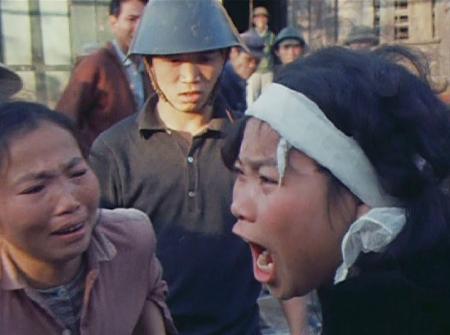Exploring North Vietnam: A Look at War Footage and its Historical Significance
The Vietnam War remains a deeply impactful event, leaving a lasting legacy on global politics and culture. While much has been written about the conflict's southern theater, understanding the North Vietnamese perspective is crucial for a complete picture. This article delves into the historical significance of war footage originating from North Vietnam, exploring its accessibility, its portrayal of the conflict, and its role in shaping historical narratives.
The Scarcity and Significance of North Vietnamese War Footage
Unlike the extensive footage available from the American side of the conflict, accessing authentic North Vietnamese war footage presents unique challenges. The communist government maintained tight control over information during the war, resulting in limited access for international media. Consequently, much of the existing footage comes from:
- Captured materials: Some footage fell into the hands of American forces during the war, offering glimpses into the North Vietnamese military operations and daily life.
- Government archives: Decades after the war's end, some North Vietnamese (and later, Vietnamese) government archives have begun to open, revealing previously unseen material.
- Personal collections: Individuals involved in the conflict, both soldiers and civilians, may have privately preserved footage, providing unique personal perspectives.
The Value of Primary Sources: Understanding Unfiltered Perspectives
The limited availability of North Vietnamese footage makes each surviving piece exceptionally valuable. This material acts as a primary source, offering perspectives often absent from Western accounts of the war. Analyzing this footage provides crucial context, allowing us to:
- Counter dominant narratives: Footage from North Vietnam helps challenge previously established narratives, often shaped by the experiences and viewpoints of those on the opposing side.
- Humanize the conflict: The footage often depicts the daily lives of ordinary North Vietnamese citizens, soldiers, and their families, offering a humanizing lens often missing from broader geopolitical analysis.
- Understand military strategies: Analysis of tactical footage can provide valuable insights into the military strategies employed by the North Vietnamese Army (NVA), adding to our understanding of the war's complexities.
Accessing and Interpreting North Vietnamese War Footage: A Note of Caution
While the internet provides greater access to historical materials, including footage from the Vietnam War, exercising critical thinking remains essential. When encountering online footage labeled "North Vietnamese," consider the following:
- Source verification: Authenticating the origin and context of the footage is paramount. Reliable sources are crucial to avoid misinformation or manipulated content. Look for reputable archives, academic institutions, or well-documented documentaries.
- Contextual understanding: Understanding the historical context within which the footage was filmed is critical for accurate interpretation. Consider the political climate, the filmmaker's perspective, and potential biases.
- Ethical considerations: When examining footage depicting human suffering or conflict, remember the ethical implications of viewing such material. Approach these historical records with sensitivity and respect for the individuals depicted.
The Future of Research and Preservation
The preservation and digitization of North Vietnamese war footage are ongoing processes. As more archives open and technology advances, access to these crucial historical sources will likely increase. Further research, careful analysis, and responsible dissemination of this footage are vital for a more complete and nuanced understanding of the Vietnam War.
Conclusion: A Deeper Understanding of History
Exploring North Vietnamese war footage offers a unique opportunity to expand our understanding of this pivotal conflict. By critically examining this material and acknowledging its limitations, we can work towards a richer and more accurate historical narrative, one that encompasses the diverse experiences and perspectives of all involved.
Call to action: If you're interested in learning more about the Vietnam War from various perspectives, explore reputable online archives and documentaries. Engage with historical sources responsibly, and contribute to the ongoing efforts to preserve and share this critical part of history.
